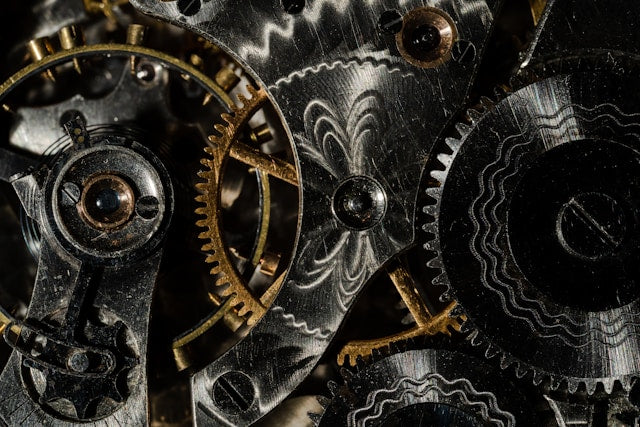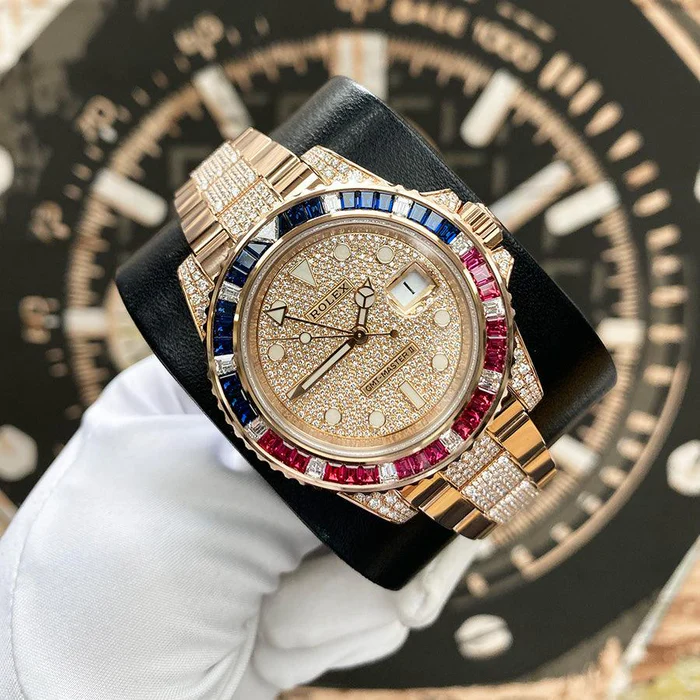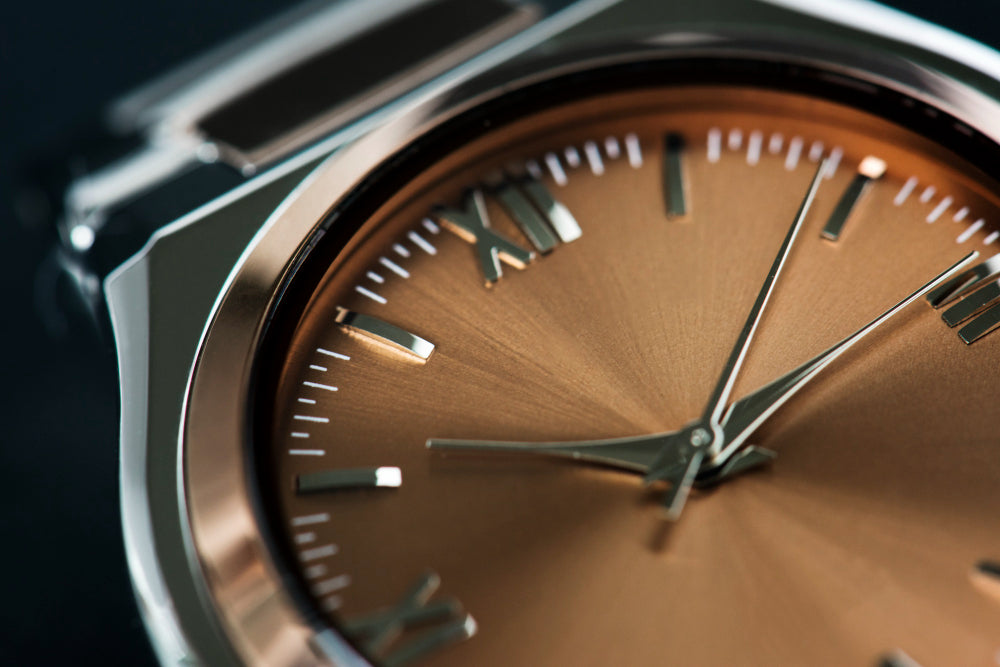A luxury watch is a marvel of engineering and design, composed of numerous components that work in harmony to create a functional and stylish timepiece. Whether you're a seasoned collector or new to the world of horology, understanding the key parts of a watch is essential to fully appreciating its craftsmanship and value. In this blog, we’ll break down the various elements of a luxury watch, from the movement to the clasp, and explain their roles and significance.
Everything You Need To Know About The Anatomy of a Luxury Watch

1. Model
The model refers to the specific design and series of the watch, often assigned by the manufacturer. It encapsulates the overall look, style, and features of the timepiece. For example, a Rolex Submariner or an Omega Speedmaster are models within their respective brands, each with its unique attributes and history.
2. Reference
The reference number is a unique identifier given to a watch by its manufacturer. It’s often a combination of numbers and letters that indicates the specific version or configuration of the model. Collectors use the reference number to verify the authenticity and details of a watch, such as the year of production, case material, and movement type.
3. Gender
Watches are typically categorized by gender, such as men’s, women’s, or unisex. This classification often influences the size, style, and design of the watch. Men's watches are generally larger and more robust, while women's watches may feature more delicate designs and smaller cases.
4. Movement
The movement is the heart of the watch, responsible for keeping time and powering its functions. There are three main types of watch movements:
- Mechanical Movement: Powered by a mainspring that needs to be manually wound. Known for its craftsmanship and tradition.
- Automatic Movement: A type of mechanical movement that winds itself using the motion of the wearer’s wrist.
- Quartz Movement: Powered by a battery and regulated by a quartz crystal, offering high accuracy with minimal maintenance.
5. Calibre
The calibre refers to the specific design or model of a watch movement. It’s like the engine model in a car. Each calibre is unique, with different configurations and complications, such as chronographs or perpetual calendars. The calibre number helps identify the movement’s features and its manufacturer.
6. Power Reserve
The power reserve is the amount of time a watch can run on a full wind before it needs to be wound again. It’s typically measured in hours, with most mechanical watches offering a power reserve of 40 to 70 hours. Some high-end watches boast power reserves of several days.
7. Condition
The condition of a watch refers to its current state, considering factors like wear, scratches, or any refurbishments. Terms like “mint,” “excellent,” or “fair” describe the level of preservation. The condition significantly impacts the watch's value, especially in the pre-owned market.
8. Box/Papers
This refers to the original packaging and documentation that came with the watch at the time of purchase. Having the original box and papers (such as the warranty card, instruction manual, and certificate of authenticity) increases the watch’s value and verifies its authenticity.
9. Band Type
The band type refers to the style of the watch strap or bracelet. Common types include:
- Bracelet: A metal band made of linked components, often stainless steel or gold.
- Strap: A flexible band made from materials like leather, rubber, or fabric.
10. Band Material
The band material is the substance used to make the watch strap or bracelet. This can include:
- Leather: Offers a classic, elegant look.
- Metal: Durable and often made from stainless steel, gold, or titanium.
- Rubber: Typically used for sports watches due to its durability and water resistance.
- Fabric: Often seen in casual or military-style watches, such as NATO straps.
11. Band Color
The band color adds to the aesthetic appeal of the watch. Common colors include black, brown, silver (for metal bands), and various hues for more personalized styles.
12. Clasp
The clasp is the mechanism that secures the watch on your wrist. Types of clasps include:
- Deployment Clasp: Opens and closes with a folding mechanism, often found on metal bracelets.
- Buckle: Similar to a traditional belt buckle, common on leather straps.
- Tang Buckle: A simple pin buckle that fastens by threading through holes in the strap.
13. Case Size
The case size is the diameter of the watch case, typically measured in millimeters. Case sizes for men’s watches range from 38mm to 44mm, while women’s watches are often between 28mm and 36mm. The case size influences the watch’s presence on the wrist and its overall style.
14. Case Material
The case material is the substance used to make the body of the watch. Common materials include:
- Stainless Steel: Durable, corrosion-resistant, and popular in luxury watches.
- Gold: Offers a luxurious look, available in yellow, white, or rose gold.
- Titanium: Lightweight and strong, ideal for sports watches.
- Ceramic: Scratch-resistant and hypoallergenic, used in high-end watches.
15. Dial Type
The dial type refers to the design and layout of the watch face. It includes the hour markers, hands, and any additional complications (like chronographs or date windows). Dial types can vary from simple and minimalistic to complex and ornate, depending on the watch's style.
16. Dial Color
The dial color is the hue of the watch face, contributing to its overall aesthetic. Popular colors include black, white, blue, and silver, but luxury watches can feature a wide range of colors, including unique shades like green, champagne, or mother-of-pearl.
17. Crystal
The crystal is the transparent cover that protects the dial. Common crystal materials include:
- Sapphire Crystal: Highly scratch-resistant and used in most luxury watches.
- Mineral Crystal: Less expensive and more prone to scratches but still durable.
- Acrylic: Used in vintage watches, it’s more prone to scratches but can be polished.
18. Bezel Material
The bezel is the ring surrounding the watch dial, often marked with indicators or scales (such as a tachymeter or dive scale). The bezel material is typically the same as the case material, but can also be made from materials like ceramic or aluminum for added durability or style.
The Bottom Line: Know Your Watch Inside and Out & Love Your Gotham Trading Watch All The More!

Understanding the anatomy of your luxury watch enhances your appreciation for its craftsmanship and helps you make informed decisions when purchasing, wearing, or maintaining your timepiece. From the movement and calibre to the case material and dial type, each component plays a crucial role in the watch’s performance and aesthetic appeal. At Gotham Trading, we’re committed to helping you find the perfect watch that suits your style and needs. Whether you’re exploring new models or caring for a beloved timepiece, our expertise ensures that you’re in good hands.



